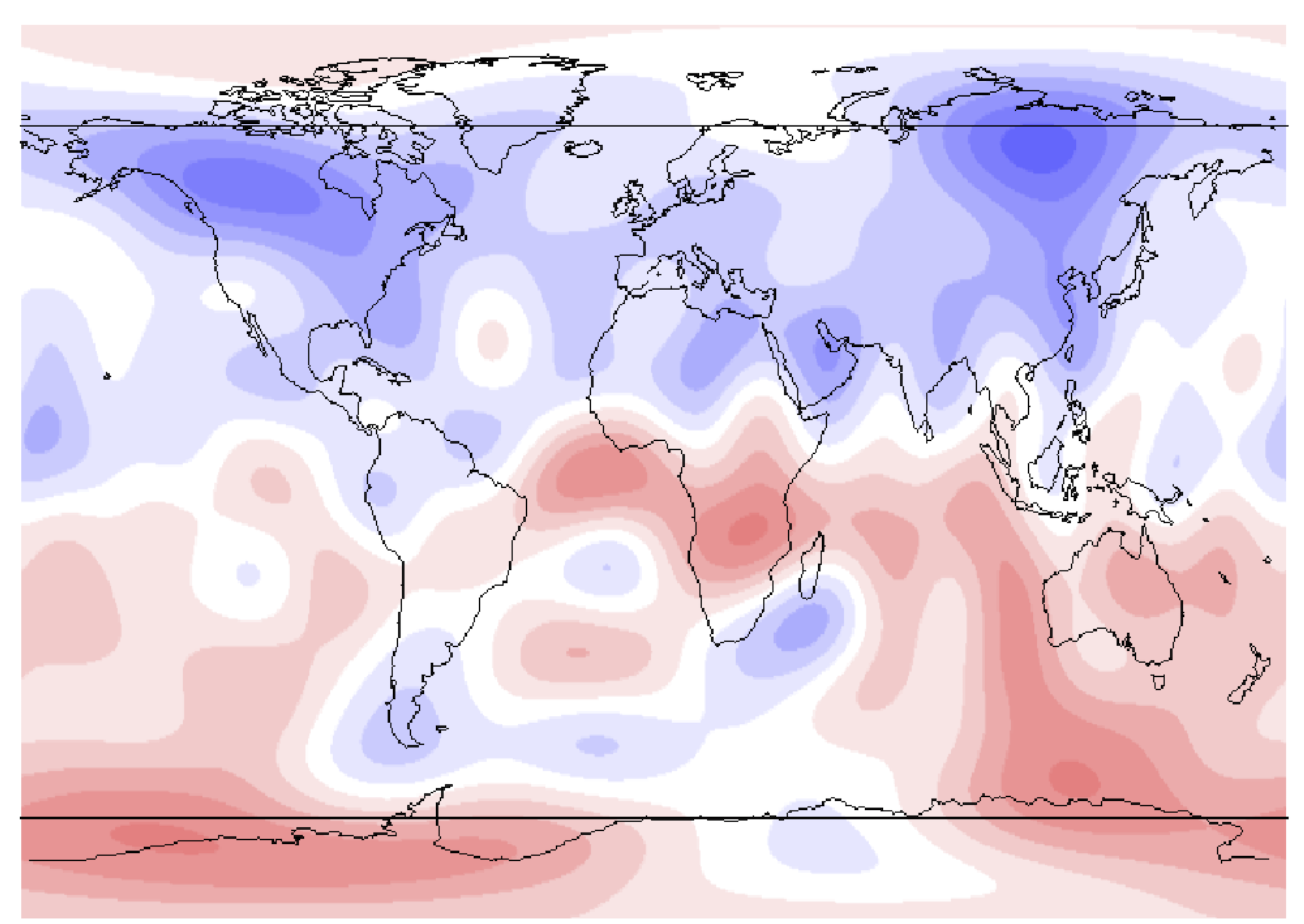Influence of the Earth’s mantle on convection in the core
The Earth’s dynamo is driven by convection occurring in its fluid outer core. It is believed that the highly viscous mantle influences the Earth’s magnetic field through control of convection in the underlying core. Understanding the structure and intensity of core convection is an essential part of the geodynamo problem. In this study, we examine the Earth-like regime of rapidly rotating convection in a spherical shell subject to laterally varying heat flux at the outer boundary. Contrary to earlier studies with weaker rotation, we find that boundary heat flux anomalies substantially ease the onset of convection. Furthermore, convection is organized in localized clusters of small scales rather than in large scales. The sliding image compares the onset of convection for homogeneous boundary heating (a) with that for two patterns of heterogeneous boundary heating (b & c).
 These results provide new insight into the geodynamo process over Earth’s history. First, in early Earth where core convection was likely driven solely by secular cooling, the lower mantle anomalies might have had an important role in supporting the geodynamo. Second, the high-latitude magnetic flux concentrations observed in the present day geomagnetic field (figure 2) might have their origin in enhanced small-scale convection at preferred longitudes within the core.
These results provide new insight into the geodynamo process over Earth’s history. First, in early Earth where core convection was likely driven solely by secular cooling, the lower mantle anomalies might have had an important role in supporting the geodynamo. Second, the high-latitude magnetic flux concentrations observed in the present day geomagnetic field (figure 2) might have their origin in enhanced small-scale convection at preferred longitudes within the core.
References:
Willis, Sreenivasan and Gubbins, Phys. Earth Planet. Inter., 165, 83–92, 2007.




 These results provide new insight into the geodynamo process over Earth’s history. First, in early Earth where core convection was likely driven solely by secular cooling, the lower mantle anomalies might have had an important role in supporting the geodynamo. Second, the high-latitude magnetic flux concentrations observed in the present day geomagnetic field (figure 2) might have their origin in enhanced small-scale convection at preferred longitudes within the core.
These results provide new insight into the geodynamo process over Earth’s history. First, in early Earth where core convection was likely driven solely by secular cooling, the lower mantle anomalies might have had an important role in supporting the geodynamo. Second, the high-latitude magnetic flux concentrations observed in the present day geomagnetic field (figure 2) might have their origin in enhanced small-scale convection at preferred longitudes within the core.